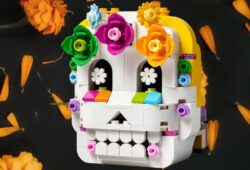Few strategies have gained as much relevance in recent years as the concept of the marketing flywheel. This innovative approach is revolutionizing the way companies interact with their customers, creating a self-sustaining cycle of growth that promises to transform the business landscape.
Understanding the Marketing Flywheel
The marketing flywheel is, at its core, a conceptual framework that focuses on creating a self-sustaining growth cycle. In this model, each stage of the customer journey feeds back into and reinforces the others, generating continuous momentum that propels business growth.
The Three Key Dimensions
The marketing flywheel is built on three fundamental dimensions:
1. The customer cycle: Composed of four crucial phases: attract, engage, convert, and retain.
2. The offline/online divide: Recognizing the importance of integrating physical and digital world experiences.
3. The enablement and support of these cycles: Providing the necessary tools and resources to keep the flywheel in motion.
The Customer Cycle in Detail
1. Attract: The first step is to capture the attention of potential customers. This involves deeply understanding the target audience and creating content and experiences that resonate with them.
2. Engage: Once attracted, the next step is to engage customers in a meaningful and ongoing way. This can include creating personalized content, offering interactive experiences, and fostering a sense of community around the brand.
3. Convert: Transforming interest into action, converting prospects into customers who make purchases.
4. Retain: Keeping customers satisfied and loyal, encouraging repeat purchases and recommendations.
The Rise of Technologized Marketing
With the increasing digitalization of society, the nature of the marketing challenge has changed significantly. Consumers are more connected than ever, and their interactions are increasingly electronic, personal, and pervasive. This revolution in interpersonal communication has created new opportunities for marketers to engage with consumers in innovative and effective ways.
The Marketing Technology Stack
A crucial component of the marketing flywheel is the marketing technology stack. This integrated collection of technological tools and platforms allows companies to better understand their customers and engage across the entire customer cycle more effectively. By leveraging the right technology, companies can personalize their interactions, automate processes, and gain valuable insights into customer behavior.
Practical Implications
To effectively leverage the marketing flywheel, organizations must be able to orchestrate customer engagement across the entire company. This requires the marketing function to extend its influence beyond the traditional boundaries of the department, encompassing various touch-points that it may not directly control.
Integration and Personalization
By integrating the marketing flywheel with a robust technology stack, companies can:
– Better understand their customers
– Participate in their decision-making processes
– Engage in more meaningful and personalized ways
This approach can lead to increased customer loyalty, brand advocacy, and long-term revenue growth.
Strategies for Each Phase of the Flywheel
Customer Attraction
To effectively attract new customers, companies must:
– Deeply understand their target audience
– Create content and experiences that resonate with them
– Leverage social media, search engine optimization, and other digital marketing tactics
Customer Engagement
Once attracted, the next step is to engage customers in a meaningful way:
– Create personalized content
– Offer interactive experiences
– Foster a sense of community around the brand
Effective engagement helps build trust, loyalty, and a deeper connection between the customer and the company.
Relationship Building
The ultimate goal of the marketing flywheel is to build long-lasting, mutually beneficial relationships with customers. This involves:
– Providing excellent customer service
– Offering valuable products and services
– Continuously adapting to the changing needs and preferences of the customer base
The Power of the Virtuous Cycle
At its core, the marketing flywheel is about creating a virtuous cycle of growth, where each stage of the customer journey feeds back into and strengthens the others. By mastering the art of customer attraction, engagement, conversion, and retention, organizations can unlock the power of the marketing flywheel and drive sustained, profitable growth.
The marketing flywheel represents a paradigm shift in how businesses approach marketing and customer relationships. By adopting this holistic, customer-centric approach, organizations can create a powerful, self-sustaining engine for growth.
In an increasingly digitalized and competitive world, the marketing flywheel offers a framework for continuous innovation, improvement, and long-term success. Companies that manage to master this concept and implement it effectively will be well-positioned to thrive in the changing business landscape of the future.










